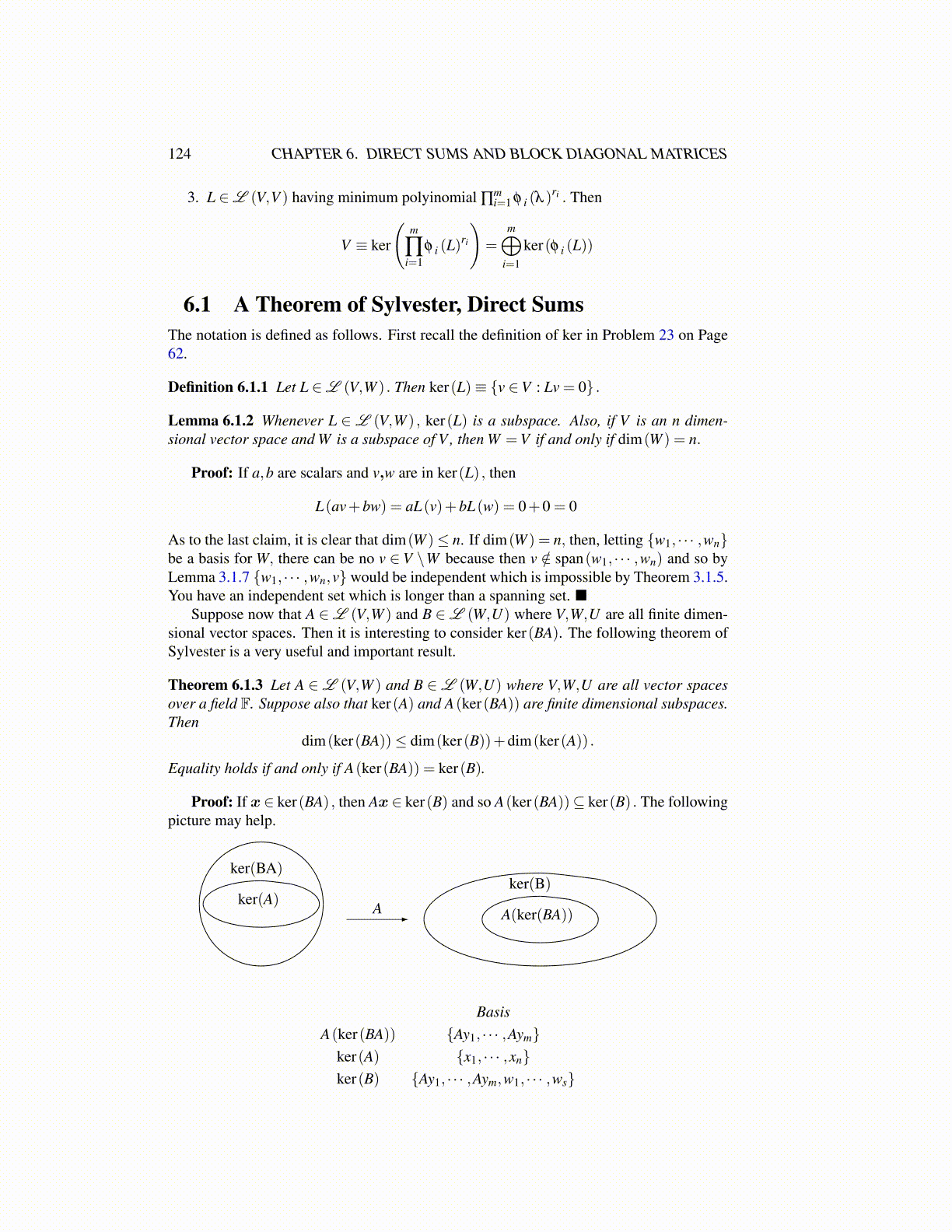
124 CHAPTER 6. DIRECT SUMS AND BLOCK DIAGONAL MATRICES
3. L ∈L (V,V ) having minimum polyinomial ∏mi=1 φ i (λ )
ri . Then
V ≡ ker
(m
∏i=1
φ i (L)ri
)=
m⊕i=1
ker(φ i (L))
6.1 A Theorem of Sylvester, Direct SumsThe notation is defined as follows. First recall the definition of ker in Problem 23 on Page62.
Definition 6.1.1 Let L ∈L (V,W ) . Then ker(L)≡ {v ∈V : Lv = 0} .
Lemma 6.1.2 Whenever L ∈ L (V,W ) , ker(L) is a subspace. Also, if V is an n dimen-sional vector space and W is a subspace of V , then W =V if and only if dim(W ) = n.
Proof: If a,b are scalars and v,w are in ker(L) , then
L(av+bw) = aL(v)+bL(w) = 0+0 = 0
As to the last claim, it is clear that dim(W )≤ n. If dim(W ) = n, then, letting {w1, · · · ,wn}be a basis for W, there can be no v ∈ V \W because then v /∈ span(w1, · · · ,wn) and so byLemma 3.1.7 {w1, · · · ,wn,v} would be independent which is impossible by Theorem 3.1.5.You have an independent set which is longer than a spanning set. ■
Suppose now that A ∈L (V,W ) and B ∈L (W,U) where V,W,U are all finite dimen-sional vector spaces. Then it is interesting to consider ker(BA). The following theorem ofSylvester is a very useful and important result.
Theorem 6.1.3 Let A ∈L (V,W ) and B ∈L (W,U) where V,W,U are all vector spacesover a field F. Suppose also that ker(A) and A(ker(BA)) are finite dimensional subspaces.Then
dim(ker(BA))≤ dim(ker(B))+dim(ker(A)) .
Equality holds if and only if A(ker(BA)) = ker(B).
Proof: If x ∈ ker(BA) , then Ax ∈ ker(B) and so A(ker(BA))⊆ ker(B) . The followingpicture may help.
ker(B)
A(ker(BA))
ker(BA)
ker(A)A
BasisA(ker(BA)) {Ay1, · · · ,Aym}
ker(A) {x1, · · · ,xn}ker(B) {Ay1, · · · ,Aym,w1, · · · ,ws}